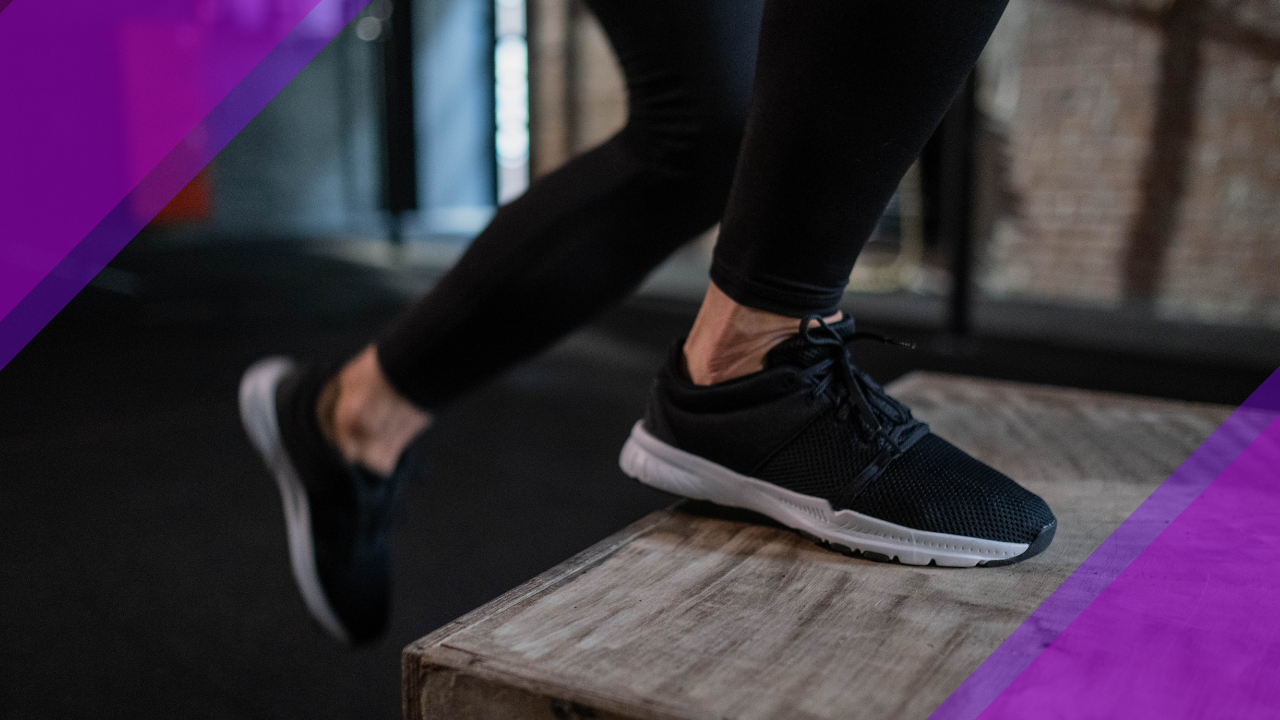May 25, 2022
5 Ways Jumping Does a Menopausal Body Good

Plyometrics is good for your mind, muscles, bones, performance, and yes, even your joints.
By Selene Yeager
When you watch kids play, you’ll see they do a whole lot of jumping — jumping on the bed, jumping on furniture, jumping up, down, and over pretty much anything in their path. They’re not doing it for “exercise”, but all that jumping is building their bones, muscles, and joints and making them stronger and more resilient, which are the exact same reasons grown-ups, like menopausal women, should be jumping, too.
In our book Next Level, Stacy Sims, Ph.D., explains the epigenetic benefits of plyometric training, stating, “When you do plyometrics, you wake up some otherwise very quiet genes inside your muscle cells that stimulate those cells to improve power and even composition of the muscle itself in a way that improves the integrity of the muscle, its contractile strength, and its response and reaction time.”
That’s important because as we lose estrogen, we lose the hormonal stimulus for strong, powerful muscle contractions. Jumping helps put that back. But that’s not all it does, plyometrics does a menopausal body good in a number of ways, including:
Stronger bones. The impact of plyometrics helps build stronger bones. One study of sixty women ages 25 to 50 found that women who jumped 10 times, twice a day for 16 weeks improved their hip bone mineral density, while their peers who did no jump training saw their bone density decrease over the same time period.
Though the women in that study were pre- or peri-menopausal, a 2019 review that included 289 older adults (176 of whom were women), ranging in age from 58 to 79 found that regular plyometric training improved bone health, muscular strength, body composition, postural stability, and physical performance.
Better sports performance (including endurance sports). It’s not a big leap (ha!) to see how plyometrics can make you a better basketball player, but jump training also improves endurance sports like running. A 2021 meta-analysis on the effects of jump training on endurance runners found that plyometric training significantly improved the runners’ time trial performance in distances like the 5K, because it improved their running economy — meaning they used less energy to go the distance like a fuel-efficient car goes further on less gas.
I personally find that plyometric training helps me feel quicker on my feet during trail runs and I feel snappier popping over logs and rocks on my mountain bike. In episode 12 of Hit Play Not Pause, ultra-runner Magda Boulet, who won the 2019 Leadville Trail 100 run at age 46, talked about how important plyometrics are for her during this time of life.
“Instead of chasing a lot of miles, I spend more time doing plyometric exercises like box jumps, squat jumps, jumping jacks, and jumping rope. After I finish a run, I’ll add a few minutes of plyometrics at the end,” Boulet says, explaining that jump training helps her improve her quad strength as well as muscle mass and bone density.
Healthier joints (especially knees). Women sometimes shy away from jump training because they’re concerned it’ll hurt their knees. The opposite is true. In a study of 80 postmenopausal women, ages 50 to 65, with mild osteoarthritis-related knee pain, researchers found that those who did jumping exercises three times a week for 12 months improved the quality of their patellar cartilage and didn’t experience jumping-related pain or stiffness. The jump training also improved their leg strength and cardiovascular fitness.
Improved bad-assery. Jumping is also fun and feels kind of badass. When I’m having some body image issues, box jumps make me appreciate the power my body can produce.
How to Do Plyometrics
You don’t need to do a ton of jumping to get all these benefits. Just add some jumps before or after whatever workout you have on tap. I personally like to finish off my lifting sessions with a set of box jumps. That ensures I’m jumping at least two to three days a week. Start with 5 to 6 jumps, and work up to 8 to 10. Start with one set; work up to two.
If you’ve never jumped before, you can start with a basic squat jump:
Stand with feet wider than shoulder-width, feet turned out a little. Squat down until your butt drops below knee level, extending your arms behind you. Quickly extend your legs, swing your arms forward and up, and jump into the air. Land softly, immediately dropping into another squat.
Once you’re comfortable there, Sims recommends progressing to a depth jump:
Stand on a step or box. Using your arms for power, jump off the step and land with your knees slightly bent and feet hip-width apart; immediately jump explosively up into the air (not back onto the step). Step back onto the step and repeat.
Once you’re comfortable with depth jumps, you can try a box jump:
Stand facing a box or step 12 to 18 inches tall. Squat down, swinging arms behind you. Swing arms forward, straighten legs to spring up onto the box. Land with soft knees, planting both feet on the box. Step down with your right leg. Repeat, stepping down with your left leg. Alternate throughout the set.
If you’re not comfortable jumping or cannot jump, you can still get some of the muscular benefits by practicing a technique trainer Kerry Ann Madden described as “threatening to jump” on Episode 79 of Hit Play Not Pause.
To do it, squat back in that athletic position with your arms down and extended behind you like you’re getting ready to propel yourself off the ground, except you’re not actually going to leave the floor. You’re going to spring up into a triple extension, powerfully standing up and swinging your arms overhead, hips straight, glutes contracted, and coming up onto the balls of your feet. Then do the opposite and start in a triple extension and powerfully drop down. Repeat for a set.
For those who can jump, this technique can help you get the confidence to take the next step and leave the ground. Start super easy, like jumping onto a short step. Then progress from there.


 Outspoken Women in Triathlon Summit Returns Bigger than Ever
Outspoken Women in Triathlon Summit Returns Bigger than Ever  Driving the Lamborghini: Productivity and the Power of Paper
Driving the Lamborghini: Productivity and the Power of Paper  5 take aways from the Compete Sports Diversity Summit
5 take aways from the Compete Sports Diversity Summit  Simple Tips to Hone Your Bike Handling Skills
Simple Tips to Hone Your Bike Handling Skills 

